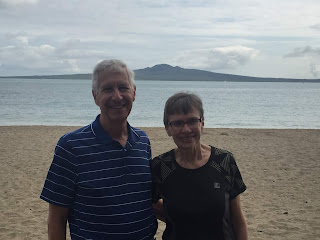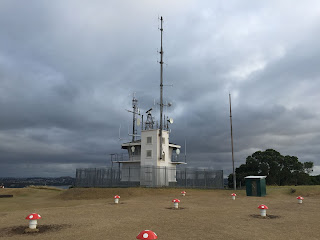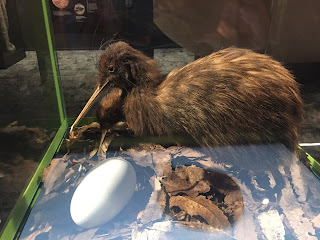I guess it's time I updated this blog, just to document history. No, we aren't traveling. Covid-19 is still raging. But there's been some adventure, of sorts.
On August 10 I had a bicycle accident on the Mississippi River Regional Trail near the Minnesota Highway 610 overpass. I landed pretty squarely on my left hip, right on the asphalt. Yes, I was wearing a helmet (everybody asks) but it was irrelevant, because my head never touched the ground. It was a perfect, one-point landing on my hip.
After a bit of time on the ground, attracting some attention from other bikers on the crowded trail, I managed to get back on the bike and ride the four miles back home. Unfortunately, when I got home and got off the bike, I could neither stand nor walk. So, bike shorts and all, I hobbled into the car and Mary drove me to Urgent Care, just a mile or so down the road.
The X-ray showed that I had shattered my left femur (thigh bone) just above the "neck" of the bone, and just below the ball joint connecting to the pelvis. I would need surgery, probably to pin the bone. They called the nearest hospital, then the next nearest, and then the next. No room in the inn! Because of summer lull in Covid cases, everybody was catching up on their elective surgeries. They finally found a bed for me in Wyoming, Minn., north of the Twin Cities, about 32 miles from home.
By now it was dark, and Mary didn't feel up to the drive. So, we called our daughter who drove over to be my ambulance driver. By the time we reached the hospital, the shock was wearing off, and I was getting pretty uncomfortable. It was midnight before they got me into a bed, hooked up to an IV, and injected me with something for pain.
The surgeon didn't like the idea of pinning the bone. The break was not clean. The bone was shattered. Best option was a total hip replacement, and the soonest it could be done was the next afternoon. As it happened, they couldn't start the surgery until about 24 hours after the accident.
They had me up and walking the halls, with a walker and a nurse holding onto me, later that evening. Mary took me home from the hospital the following day. A physical therapist visited the house a couple times and gave me some exercises to do, but mostly they just wanted me to get up and walk.
I had lots of help and support from Mary, and from our granddaughter, daughter, and others. Recovery seemed slow to me, but everyone said I was doing amazingly well. Most hip replacement patients suffer through years of gradual decline and the hip deteriorates, so the therapy is long and difficult. Because I was in good shape at the beginning, things went faster.
As a precaution, my internist ordered a bone density scan, and discovered that I have a condition called osteopenia, a precursor to osteoporosis. That is treatable with medication, and needs to be addressed before other bones begin to break in more dangerous places. Had it not been for the fall, I probably would not have learned that I have it. So perhaps it wasn't such a bad thing, after all.
I won't be biking again until spring, but I have the bike on a stationary training stand in the basement. I'm riding a couple times a day, and hoping to be in shape when the weather warms once again.


















































